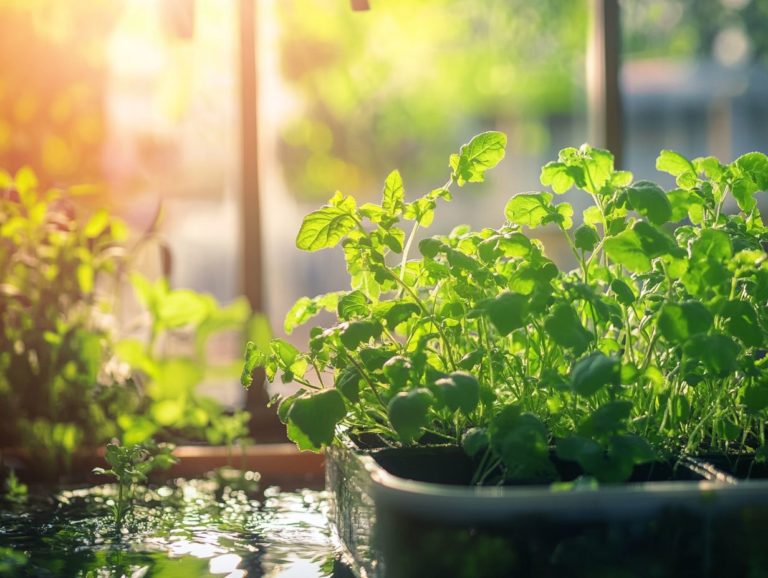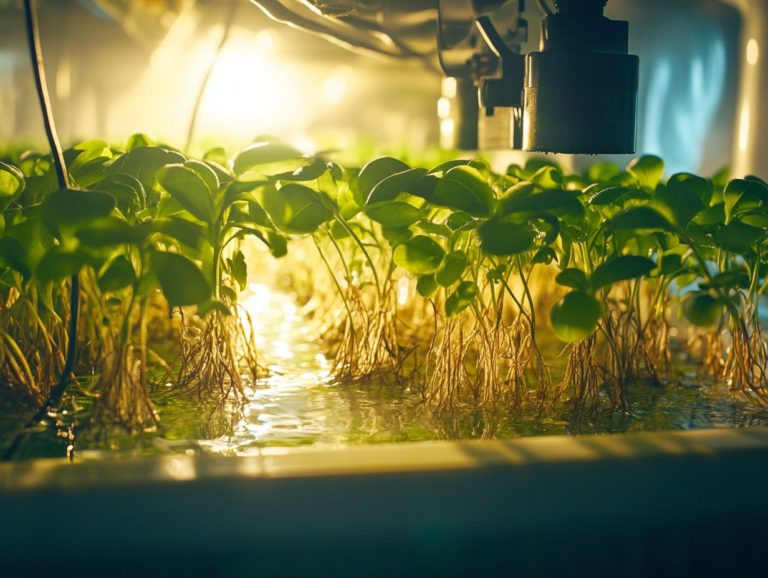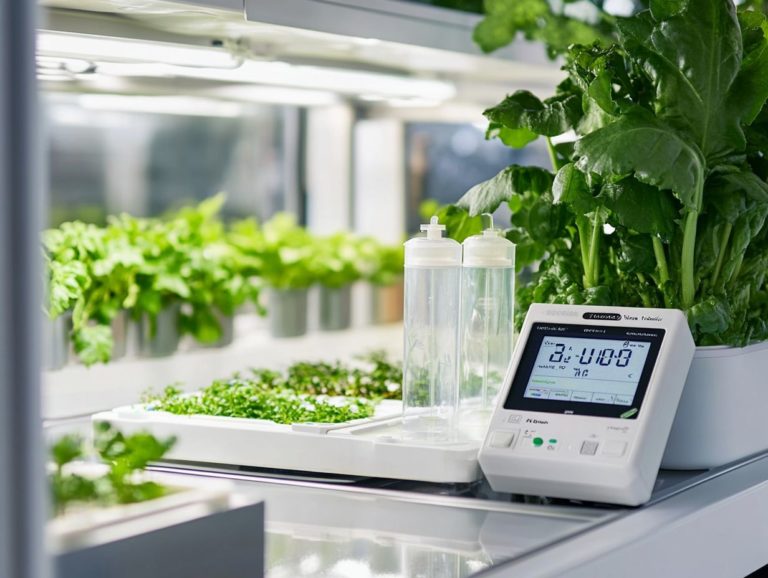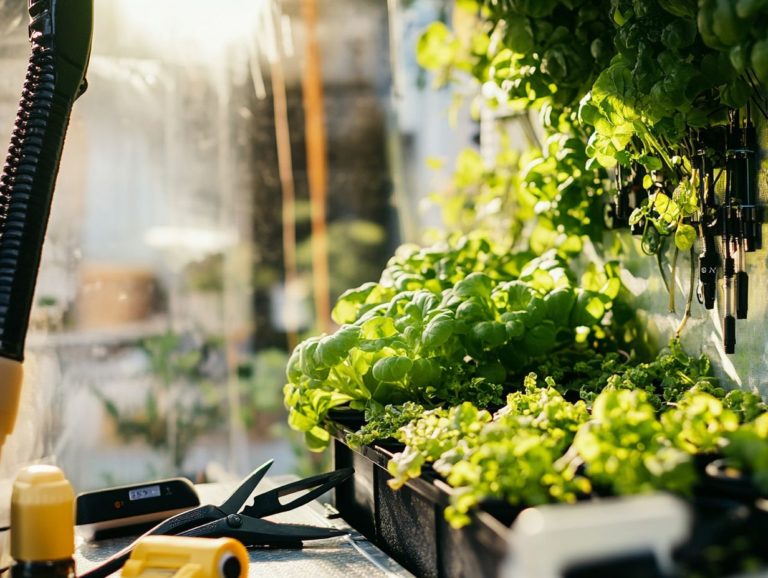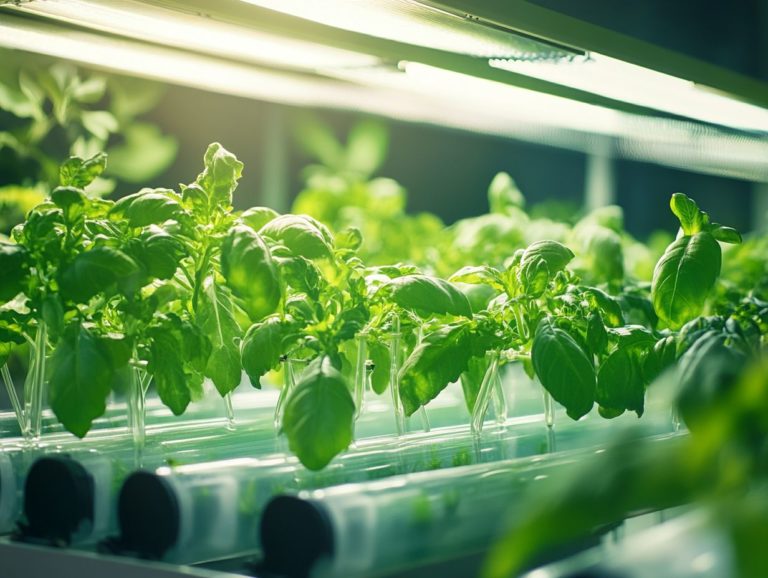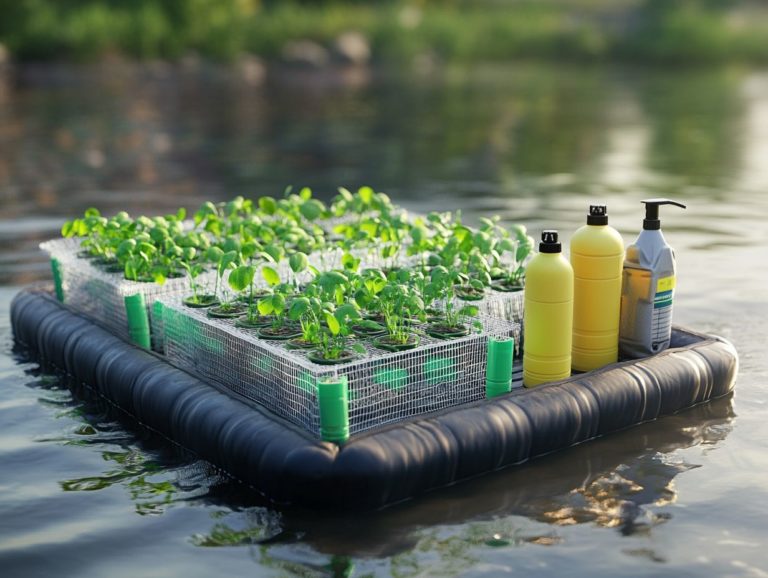Phytoponics: A New Hydroponic Approach
Phytoponics is transforming how you grow plants without soil, offering a modern take on traditional hydroponics.
This cutting-edge system boosts plant growth and brings numerous environmental and economic advantages. You ll explore the many benefits of phytoponics compared to conventional methods, learn how it operates, and receive a detailed, step-by-step guide to set up your own system.
You will also explore common challenges you might face, along with effective solutions, and gain insights into the future potential of this remarkable agricultural technique. Immerse yourself in phytoponics and discover how it can elevate your gardening experience!
Contents
- Key Takeaways:
- The Benefits of Phytoponics
- How Phytoponics Works
- Setting Up a Phytoponics System
- Potential Challenges and Solutions
- Future of Phytoponics
- Frequently Asked Questions
- What is Phytoponics and how is it different from traditional hydroponics?
- What are the advantages of using Phytoponics over soil-based agriculture in terms of local production and water efficiency?
- How does the deep water culture system in Phytoponics work, and what role does the nutrient solution play?
- Can any type of plant be grown using Phytoponics, including crops like tomatoes, cucumbers, and peppers?
- Is Phytoponics suitable for both commercial agriculture and home use?
- How can I get started with implementing Phytoponics, and what role do business partnerships play?
Key Takeaways:
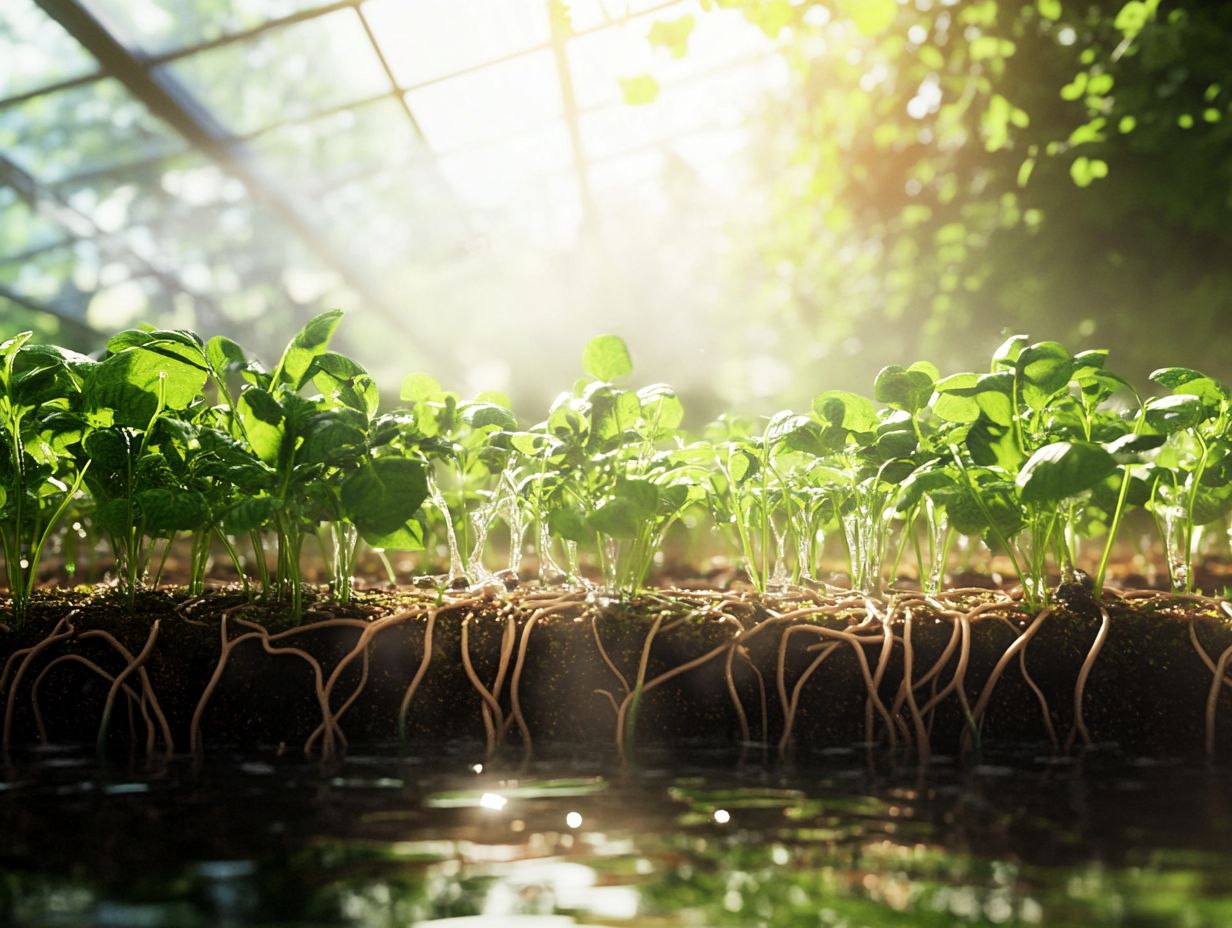
- Phytoponics offers a new hydroponic approach that is more efficient and environmentally friendly than traditional methods.
- Key components include a deep water culture system and organic nutrients.
- Setting up a Phytoponics system is simple with a step-by-step guide.
What is Phytoponics?
Phytoponics is a cutting-edge agricultural approach that blends deep water culture a method where plants are grown in a nutrient-rich water solution and hydroponics to advance sustainable farming and enhance crop production. Pioneered by Adam Dixon, this method uses nutrient solutions to optimize environmental impact while meeting the rising demand for fresh produce in a changing climate.
By balancing the nutrient solution, Phytoponics creates an optimal growing environment that maximizes plant health and yield. This technique conserves water compared to traditional farming and significantly reduces reliance on harmful pesticides, reflecting a commitment to environmental stewardship.
As this method gains traction, larger-scale implementations are proving to be not only feasible but efficient, allowing technology to scale in response to global food demands. In a world focused on sustainable practices, this innovative approach is your ticket to transforming the future of farming!
The Benefits of Phytoponics
Phytoponics offers numerous advantages that elevate sustainable agriculture and crop production. It serves as a transformative solution for both commercial growers and local production initiatives, revolutionizing cultivation.
Advantages over Traditional Hydroponics
Phytoponics provides compelling advantages over traditional hydroponics, particularly through its innovative deep water culture use, which enhances crop production and offers superior plant support.
This approach optimizes nutrient absorption, minimizes water usage, and reduces energy consumption, fostering a more sustainable growing environment. Its scalability allows it to adapt smoothly to various agricultural scales, from compact vertical farms to expansive commercial operations.
With advanced technology, Phytoponics continuously monitors and adjusts environmental conditions in real time, ensuring that plants receive exactly what they need for optimal growth. Those who embrace Phytoponics enjoy higher profits while contributing to efficient resource management.
Ready to transform your gardening experience? Dive into phytoponics and explore its potential!
Environmental and Economic Benefits
The environmental and economic benefits of Phytoponics are nothing short of remarkable! This method lets you grow crops all year round, offering real solutions to urgent challenges like climate change while championing sustainable agriculture and economic growth.
This farming method uses hydroponics to make the best use of resources, significantly reducing dependence on chemical fertilizers and pesticides. By utilizing nutrient-rich water systems, Phytoponics effectively minimizes water waste and lowers carbon footprints an essential strategy in an era where global resources are increasingly scarce.
This method enhances food security and invigorates local economies through job creation and agricultural diversification. As you navigate the impacts of climate change, embracing such sustainable practices gives your community the power to adapt more effectively to environmental challenges while building economic resilience.
How Phytoponics Works
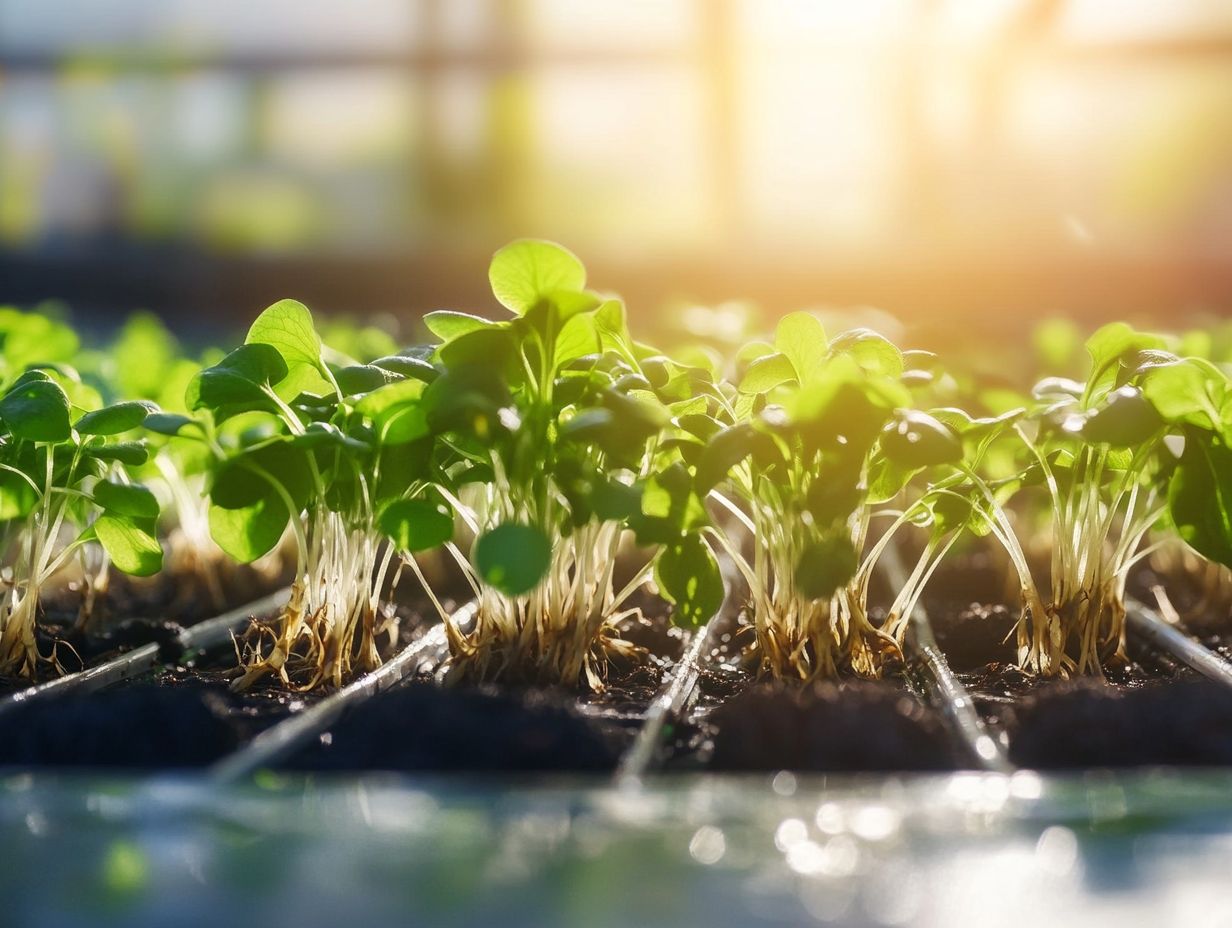
Phytoponics thrives on the principles of deep water culture and hydroponics, creating a controlled environment where you can nurture plants with a nutrient solution designed to optimize growth and efficiency.
This innovative approach ensures that your plants receive the ideal conditions for thriving, leading to remarkable results.
Key Components and Techniques
The key components and techniques of Phytoponics encompass advanced hydroponics systems, tailored nutrient solutions, and innovative engineering designs specifically crafted to optimize plant growth.
These systems utilize nutrient solutions that cater to the unique requirements of each plant, ensuring that essential minerals and vitamins are delivered efficiently within a controlled environment. This level of precision not only accelerates growth rates but also elevates the quality of yields.
The engineering designs integral to Phytoponics are crucial; they range from modular frameworks to sophisticated lighting strategies, all meticulously designed to maximize photosynthesis while minimizing resource consumption.
Recent studies show that using renewable energy sources to power these systems is effective, reinforcing the commitment to sustainability. Together, these elements foster an efficient ecosystem where plants can flourish, even in urban environments, paving the way for eco-friendly agricultural practices.
Setting Up a Phytoponics System
Setting up a Phytoponics system requires a methodical approach, ensuring that you create optimal conditions for plant growth within a controlled environment.
This often involves integrating hydroponics systems in greenhouses, where every detail is meticulously arranged to foster the ideal atmosphere for thriving plants.
Step-by-Step Guide
A step-by-step guide to setting up your Phytoponics system begins with selecting the right hydroponics framework and ensuring you have environmental control for optimal nutrient management.
- Start by considering various hydroponics options, such as deep water culture or nutrient film technique, depending on the crops you want to grow and the space you have available.
- Once you ve decided on the framework, your next focus should be choosing high-quality nutrient solutions tailored to the specific needs of your plants, making sure they receive essential minerals like nitrogen, phosphorus, and potassium.
Establishing environmental controls is equally crucial. Pay attention to temperature, humidity, and light conditions, as these factors significantly influence plant health and growth rates.
Utilizing timers and sensors can help streamline these adjustments, resulting in a more productive setup overall.
Potential Challenges and Solutions
Phytoponics has many advantages, but challenges do exist! Addressing these challenges with innovative solutions is essential for fostering agricultural sustainability and attracting further rounds of investment.
Addressing Common Issues
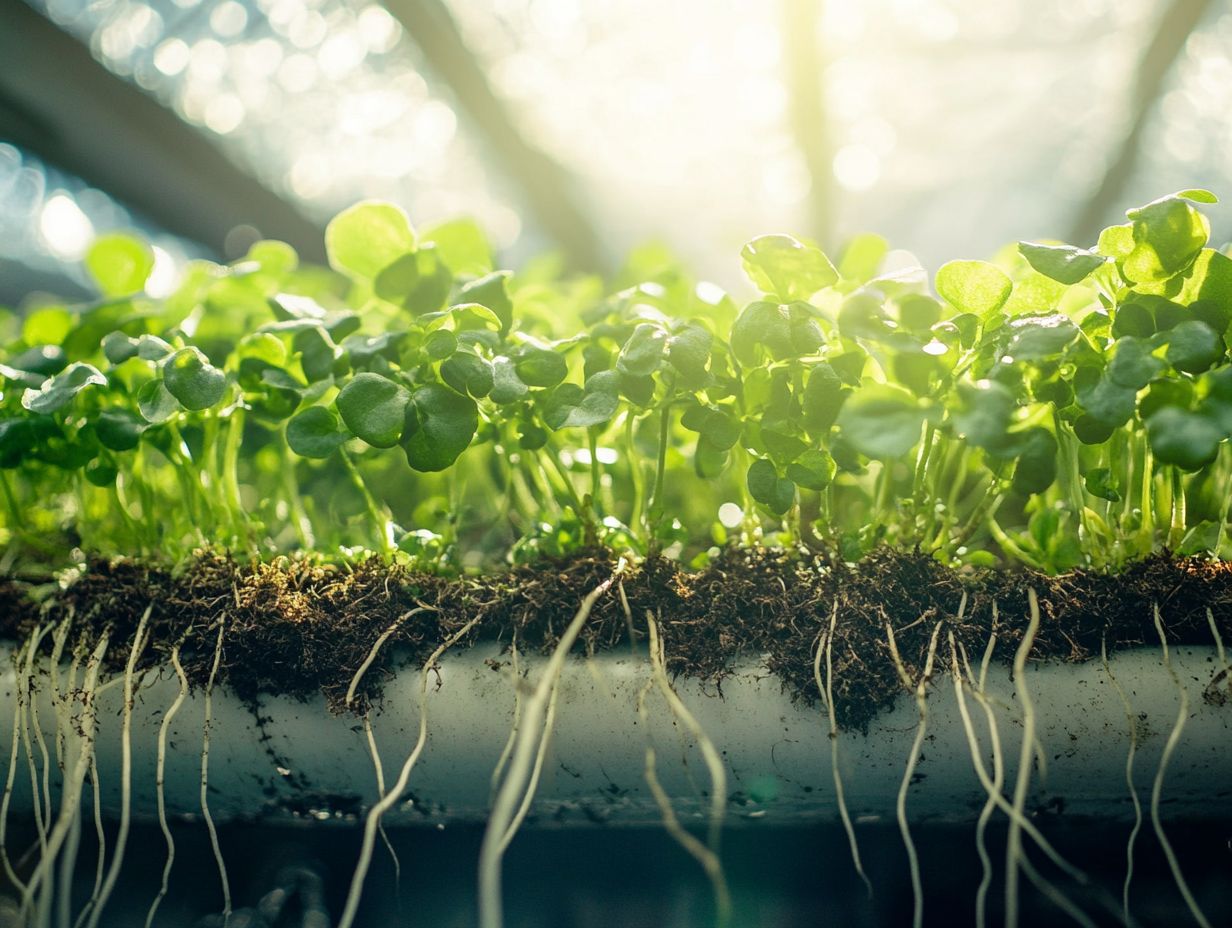
Addressing common issues in Phytoponics requires effective solutions that enhance crop production and improve water efficiency.
As a farmer, you may face challenges such as nutrient imbalances, disease management, and substrate quality. Each of these factors can directly impact your yield and overall crop health.
A practical approach to managing nutrients involves using systems that help you give plants exactly what they need to grow. These systems allow you to tailor nutrient delivery specifically to your plants’ needs. Incorporating integrated pest management (IPM) techniques helps address disease concerns without relying on harmful chemicals.
Choosing high-quality substrates is essential. They significantly promote root development, which is crucial for maximizing water uptake and nutrient absorption. This leads to a more productive Phytoponic system.
Future of Phytoponics
The future of Phytoponics is promising, offering a wealth of growth opportunities that could profoundly influence agricultural innovation.
This advancement paves the way for enhanced sustainability and plays a pivotal role in the creation of eco-hubs characterized by low carbon emissions.
Potential Growth and Impact
The potential growth of Phytoponics is closely tied to the rising market demand for sustainable agriculture. It has the capability to enhance agricultural sustainability.
As consumers become more aware of environmental concerns and the drawbacks of conventional farming methods, Phytoponics is emerging as an essential solution. This innovative approach not only optimizes space and conserves water but also promises improved yields without a harmful reliance on chemical fertilizers or pesticides.
Integrating Phytoponics into urban settings showcases its flexibility and significance, especially in addressing food security challenges posed by growing populations. Aligning with market trends and the urgent need for eco-friendly practices, the long-term impact of Phytoponics has the potential to redefine agricultural standards, promoting resilience and sustainability in food production.
Frequently Asked Questions
What is Phytoponics and how is it different from traditional hydroponics?
Phytoponics is a new hydroponic approach that utilizes a deep water culture system to grow plants. Unlike traditional hydroponics, it minimizes the use of pumps and filters, making it more cost-effective and energy-efficient.
What are the advantages of using Phytoponics over soil-based agriculture in terms of local production and water efficiency?
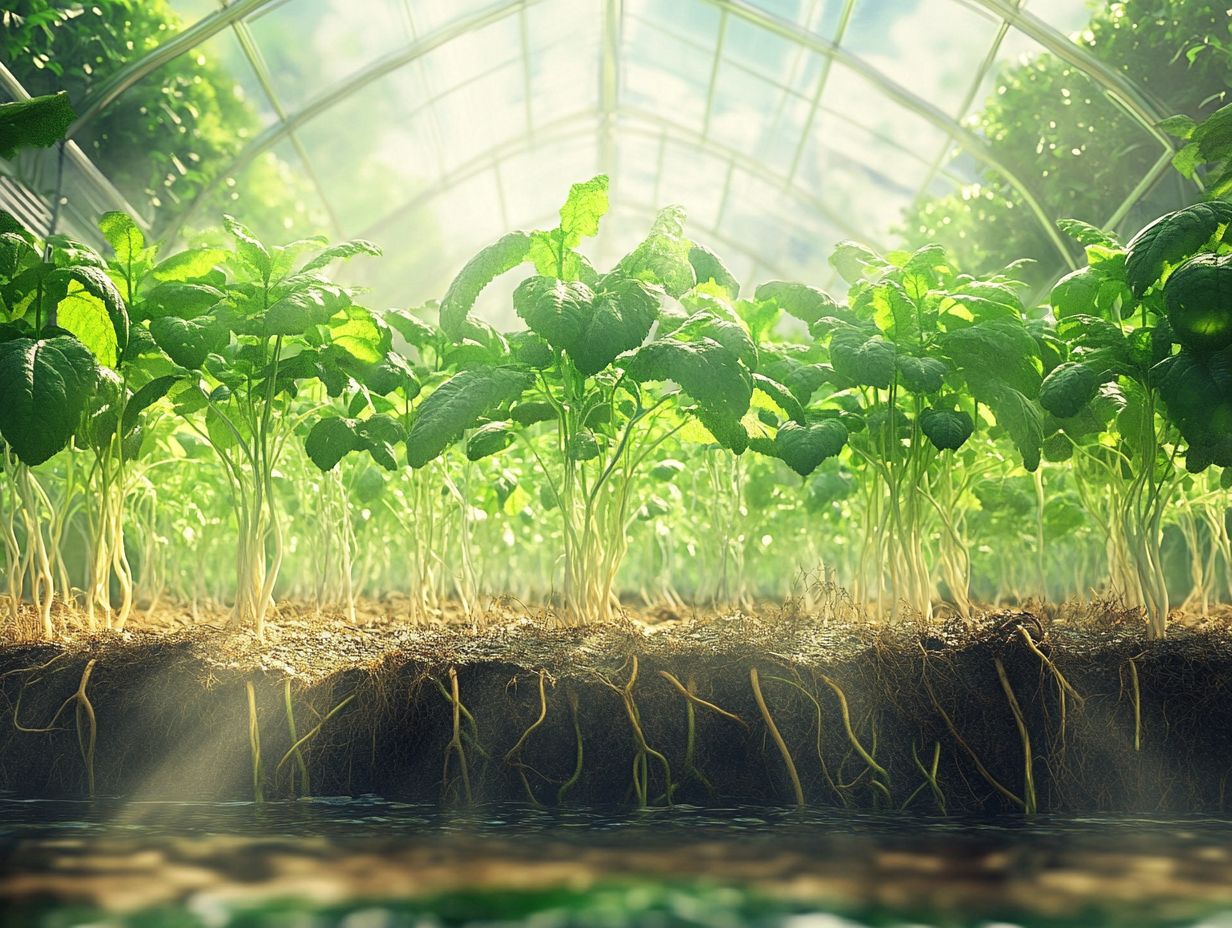
Phytoponics allows for faster plant growth and higher yields. It also enables crop cultivation in areas with limited access to fertile soil. This method reduces water usage and eliminates the need for pesticides, contributing to controlled environment practices in protected horticulture.
How does the deep water culture system in Phytoponics work, and what role does the nutrient solution play?
The deep water culture system suspends plant roots in a nutrient-rich solution. This setup allows for direct absorption of nutrients. The solution is aerated to ensure proper oxygen levels for the roots.
Can any type of plant be grown using Phytoponics, including crops like tomatoes, cucumbers, and peppers?
Yes! Phytoponics supports a wide variety of plants, including leafy greens, fruits, and herbs. It is particularly suited for plants with shallow root systems, offering an efficient way to meet food demand.
Start your Phytoponics journey today and transform your gardening experience!
Is Phytoponics suitable for both commercial agriculture and home use?
Yes, Phytoponics is perfect for both large-scale commercial farming and small home gardens. Its compact design and low energy usage make it ideal for urban and indoor farming, supporting local production and energy parks.
How can I get started with implementing Phytoponics, and what role do business partnerships play?
You can easily purchase Phytoponics systems and equipment from specialized suppliers. Consulting with experts will help you set up and maintain your hydroponic farm.
Engaging in research and development will greatly enhance your learning experience. By partnering with businesses, you can access valuable resources and support, making your Phytoponics journey even more exciting!

